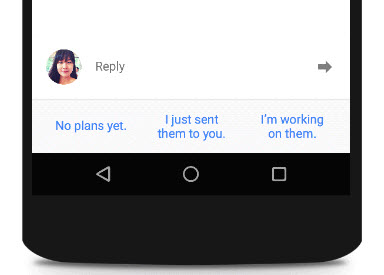Google Inbox will soon predict your replies by analyzing your emails
Google announced a new feature today that it is launching in Inbox by Gmail tomorrow that it calls Smart Reply. The feature is designed to predict replies to display those as options to you when you are responding to emails to improve your workflow further and reduce typing.
Smart Reply has been designed to cut response times and make it less time-consuming to reply to emails in Inbox for Gmail.
The new feature displays up to three suggested responses when you are replying to emails based on the emails you have received in the past.
For instance, if you receive an email that is asking for vacation plans, suggestions may be provided that state that you have not made any plans yet, that you are working on them, or that you have them and sent them with the email or soon.

The responses are basic and while that works well for certain types of emails you receive, may need to be fleshed out more often than not.
There is no requirement to use them at all, but if you do, all you need to do is tap on one of the responses to add them to the email you are about to write.
So how is Inbox coming up with these responses?
According to Google, it uses machine learning to "recognize emails that need responses" and to generate "natural language responses on the fly".
What this means is that these emails get parsed by Google much as they are when the company is detecting spam, picking up travel information or other types of information.
Additional details about the inner workings of Smart Reply are available on the Google Research blog.
Like other sequence-to-sequence models, the Smart Reply System is built on a pair of recurrent neural networks, one used to encode the incoming email and one to predict possible responses. The encoding network consumes the words of the incoming email one at a time, and produces a vector (a list of numbers). This vector, which Geoff Hinton calls a “thought vector,” captures the gist of what is being said without getting hung up on diction -- for example, the vector for "Are you free tomorrow?" should be similar to the vector for "Does tomorrow work for you?" The second network starts from this thought vector and synthesizes a grammatically correct reply one word at a time, like it’s typing it out.
Closing Words
I don't think that Smart Reply is as useful as Google would like it to be. On the desktop, it is more or less useless due to the short nature of responses. On mobile devices, it can be somewhat useful but unless you get lots of emails per day, won't really be that beneficial either considering that it does not take long to type short replies manually instead.
Privacy-conscious users may dislike the idea of the company crawling its emails to generate these responses. To be fair though, that is already happening and the new Smart Reply feature does not change that either way.
Now You: Smart Reply, useful feature or creepy?